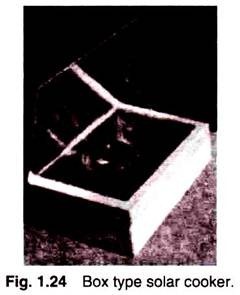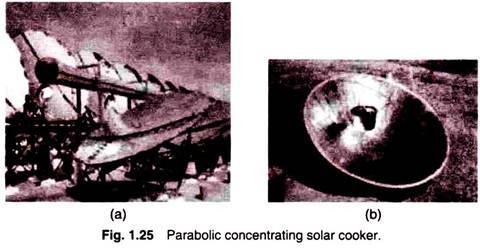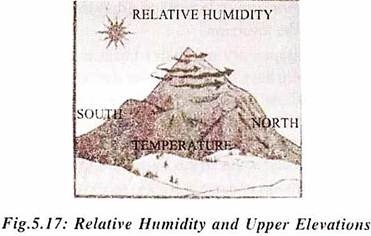ADVERTISEMENTS:
In this article we will discuss about the denudation and depositional work of glaciers.
Denudation Work of Glaciers:
Glaciers are the important source of denudation. If we look at history of the Earth, we find that thousands of years ago, during Ice age, 20% part of Earth was covered by glaciers which has confined to only 10% part now. Global climate change is responsible for this. About 96% part of glaciers of the world is found in Antarctica and Greenland only. In Antarctica, thickness of glacial ice varies from 1500 meters to 4000 meters.
According to the research of NASA, the temperature of Antarctica has been increasing by 0.12° per decade in last 50 years, owing to this, the layers of ice sheet are breaking continuously. This activity has resulted in rise of sea level by 73 meters.
ADVERTISEMENTS:
Glaciers are found in mountains or near to high latitudes or at poles because temperature at these regions is below freezing point. These regions receive snowfall continuously even in shape of snowflakes. Because of continuous snowfall and low temperature the lower layer of snow get hardened and is known as glacier.
Most of the regions in our world receive snowfall in winters. Snow melts because of high temperature and when snow starts shifting because of rise in temperature and melted parts start moving that is known as glacial movement.
According to Penguin Dictionary of Geography, “A glacier is an extensive body of land ice which exhibits evidence of downslope movement under the influence of gravity and which forms from the recrystallization of neve and firn”. Holmes has defined glacier as “masses of ice which, under the influence of gravity, flow out from snowfields where they originate”. It makes clear that only a huge piece of ice/snow is not a glacier, nor is that frozen huge only which melts at increase of temperature.
Transformation of Snow into Glacier:
At snowfall, snow is very soft single ice crystal or aggregation of ice crystals is known as snowflakes with the continuous process of combination of flakes, formation of granular snow begins. Water vapours start turning into solid form and low temperature helps in unifying of (firn) crystalized ice which further takes form of hardened snow. This is known as ice of glacier. Pores disappear at this stage and when this ice starts moving its solid form puts effect upon its speed also.
The speed of glacier depends on the following aspects:
1. Bigger the size of glacier, faster it will move.
2. Glaciers may move at speed varying between some centimeters to 40 centimeters.
3. They move fast on steep gradients.
4. Their speed is high during summer.
Snow Fields and Snow Line:
Regions which are always covered by snow are known as snow fields. Glaciers start from snow fields. All the continents have snow fields except Australia. The line above which, the rain water falls (as) in the form of snow is known as snow line. In hot areas the height of snow line extends upto 5000 meters. In cold areas, it is even upto sea level. This line is also low in steep gradients of mountains.
Works of Glacier:
ADVERTISEMENTS:
Glacier is a form of hard ice, which move and expands continuously. It can move at speed of some centimeters in a year to 100 meters in a week. Their speed varies and it is different from each other. Some of the glaciers reach upto the sea while others melt before reaching there. Glaciers play an important role in changing the structure of land/Earth. Glaciers also perform erosion, transportation and deposition activities.
When they move they carry stones, rocks, soil, vegetation etc. along with them. If the glacier is made up of ice only then its erosion capacity is nil. On the other hand glaciers having debris perform erosion activity more abundantly.
The erosion process by glaciers is carried out in following ways:
(i) Plucking or Quarrying:
This is the process in which glaciers move the rocks broken by weathering from one place to another. This activity is more vibrant at leeward slopes i.e. slopes facing away from the direction of ice movement.
(ii) Abrasion:
Glaciers get power of erosion and friction when they carry debris with them. Big rocks move beneath the layers of ice and with the movement of glaciers these big rocks performs the friction activity on the banks and bed of valley, resulting in the increase of depth and breadth of valley.
(iii) Attrition:
This is a process in which size of broken rocks decreases, because of their friction with each other or with Earth. Such frictional activity is called attrition.
Following land forms are formed due to the erosion process of glaciers:
1. Crevasses:
When a glacier moves, the speed is higher at central part as compared to its outer parts i.e. sides. The path on which glacier moves eroding it while moving, is known as pavement. During its movement as glacier approaches some higher hindrance, it climbs over and then proceeds climbing down. In this process the upper layer of glacier develops vertical cracks which expand with passage of time.
Such cracks are known as Crevasses. As a glacier proceeds further average or steep slope, these crevasses enjoin each other and glacier takes smooth form. These crevasses are very dangerous for tourists, because when these are covered by fresh snow, no one can judge that they might be 2 meter broad and 50 to 200 meters deep.
2. Cirque:
‘Cirque’ is a word from French language. If pits are formed by rivers on steep gradients, their size is increased by erosion process of glaciers. Further they are filled by ice and hence known as ice reservoirs. Their shape looks like ‘resting chair’.
These are also known as Berg-Schrund. Their size increases further because of freezing of ‘Frost’ and Snow. Sometimes a lake is formed in the centre of cirques, known as Torn. ‘Cirque-de-Cavernic’ is the world famous cirque. In Scotland, cirques are known as ‘Corrie’, in Germany as ‘Karren’, is Norway as ‘Cron’ and in Scandenevia these are known as ‘Kessel’.
3. Horn:
As ice accumulates in a cirque at a particular height and takes form of huge ice reservoir, the breadth of cirque increases because of freezing of ice, resulting in erosion of rocks which fall in its path.
In such conditions, sides of central point erode and only the central point is left un-eroded, which looks like a ‘horn’. ‘Matter horn Peak’ of Switzerland is the finest example of horn. When the ice of horn melts, a steep rock appears which is known as ‘Nunatak’. These forms are found in Greenland and Antarctica.
4. Col or Pass:
When cirques are formed on both sides of mountain, some part of central Ridge also falls down with passage of time forming way/path which is known as ‘Pass’. In Alpas mountains various passes have been formed by glacial activity. These are used for transportation purposes. ‘Indira Col’, situated in the northern India, has big strategic importance for India, Pakistan, Afghanistan, Tajakistan and China.
5. Comb Ridge or Arete:
When, on the both sides of ridge of the mountain, cirques have formed several horns and they look like Comb that is known as Comb Ridge. Sometimes tips of high mountains also look extremely sharp and are known as Arete.
6. U-Shaped Valley:
When glacier moves in a pre-formed valley, the breadth of valley increases because of the erosion by the glacier. Due to this process valley looks like the shape of Roman alphabet ‘U’. That is why it is known as U-shaped Valley.
7. Hanging Valley:
Like rivers, glaciers too have tributaries. Main glacier increases the depth and breadth of its valley, the other glaciers moving towards this valley conjugate with main glacier, and forms a steep gradient. After melting of ice, the level of valley formed by main glacier decreases as compared to that of glacial tributaries. Tributaries conjugate with main glacier as ‘fall’. In this situation valley of tributary seems to be hanging in the valley of main glacier. It is known as hanging valley.
8. Sheep Rocks or Roche Moutonnes:
‘Roche Moutonnes’ is a word of French language which means ‘Fleecy Rock’. Sometimes there are big rock forms in the path of a moving glacier, which cannot be broken easily. Glacier moves up on this rock and with erosion and friction, decreases its height without stopping at this point.
This whole process results in the leveling of the windward side of rock and the leeward side becomes rough and steep. Due to this it looks like a sheep and is known as ‘Sheep Rock’. From a distance it looks like back of a sitting sheep.
Glaciers carry rocks, stones, soil, vegetation etc. along with them. The erosion process of glacier depends upon the debris it is carrying. Glacier performs the task of transportation in several ways. Debris comes on the surface of glacier because of weathering. The heavy part of debris moves down through the cracks.
Due to the formation of other layers of ice on the top heavy debris keeps deposited in the lower layers but it also moves with the movement of glacier while moving various types of erosion and friction process are carried out by the glacier. Glacier can move heavy rocks weighing upto several tonnes, from one place to another.
Depositional Work of a Glacier:
As glacier melts or stops moving, it deposits the debris on the surface and its sides, which is known as glacier drift.
When glacier loses its capability of carrying ‘glacier drift’, the debris is deposited which results in formation of various land forms:
i. Moraines:
On melting, glacier deposits its debris in the form of a heap. Rocks deposited are not uniform, and are of several types and different colours e.g. Soft rocks, which are also known as glacier flour, triangular shaped pieces, big rocks, whose diameter varies from some centimeters to 20 meters, are found in this debris. This debris is known as Till or Morains.
Following are the types of Moraines:
(a) Lateral Moraines:
When pieces of rocks are deposited on the both sides of the glacier and are sometimes higher than even 100 feet. This form is known as Lateral Moraines. The thickness of moraines in Alaska, extends upto 350 meters.
(b) Medial Moraines:
When two glaciers conjugate, the moraines of their sides also conjugate forming a single moraine. Huge variation is found in the width of these moraines.
ii. Esker:
Sometimes, ice melts at the lower parts of the glacier and water starts flowing beneath the ice forming tunnels in the glacier. Debris gets deposited in these tunnels. With the passage of time both water and ice disappears, leaving behind the debris in the shape of long lines.
This is known as ‘Esker’. Its length varies from 10 meters to 100 kilometers and their breadth also varies from some meters to kilometers. These are found in Finland, Sweden, North England and Scotland.
iii. Kettle Holes:
When glacier moves, pieces of rocks or stones fell on it. After sometimes with the melting of ice, small holes are formed in glacier. These holes are known as ‘Kettle Holes’. These are found in North American Prairies.
iv. Kame:
When glacier melts, the soil and other items of debris deposited in the cracks, get deposited in form of mound. It is known as Kame. Examples of these are found in the parts of Scotland, Finland and Canada.
v. Outwash Plain:
When a glacier passes through the ice tunnels and deposits the sediments at a distance or in simple words when a glacier make its last moraine, the melted part of the glacier takes away light soil and deposits it in the form of layers and such deposits attain the form of plains. This is known as ‘Outwash Plain’. This particular name is given to this landform because all the material has been taken from the last moraine. In Iceland’s these are known as ‘Sandur’.
Are we still living in ‘Ice Age’ or it has been finished? (The time Period of 25 lakh years ago is accepted as ‘Ice age’). Presently also, the region covered with snow/ice give us the answer ‘Yes’. But if the human activities continuously act as a reason behind the melting of ice then definitely we will lose the glaciers. Global warming and Greenhouse gases are major cause of melting of ice.
In India, Himalayan mountains are house of snow. Total area of Himalayas is 5 Lakh Km2 out of which 33,000 Km2 is covered by snow. This mountain region has 15,000 glaciers ‘Siachin’ glacier which is situated in Nurba valley, is the largest glacier (after poles). It covers the area of 450 square kilometers. Gangotari glacier is the source of river Ganga, Baltoru and Godwin Austin are also big and important glaciers.






